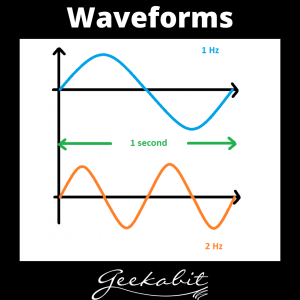This week on the blog we’re excited to share the completion of a recent Wi-Fi project for a client over in Farnham, Surrey.
Find out how our Wi-Fi engineering experts helped to transform this remarkable historic space into a well-connected Gastropub.
The Venue

Third Monkey is a new Gastropub, Restaurant and Cocktail Bar providing high-end hospitality and fun family dining in the heart of Farnham.
The historic building was designed by Sir Edwin Lutyens in the late 1800’s and whilst much of his original architecture will remain, the updated premises will boast 2 floors of buzzing atmosphere plus a roof terrace.
The building has been used as The South Street Social Club in recent years, formerly known as the Liberal Club, but closed back in 2023 due to the ongoing effects of the pandemic as well as other factors.
Now under new owners, Third Monkey and its Executive Chef are breathing new life into this notable building, bringing with it ‘refined yet relaxed’ vibes through its welcoming Gastropub on the ground floor, and a more elevated dining experience in the Restaurant and Cocktail Bar upstairs. And let’s not forget the Rooftop Terrace complete with weekend DJ’s providing a late-night destination venue for Surrey’s most sought-after town.
You can find this exciting new venue at 46 South Street, Farnham, Surrey, GU9 7RP.
Expert Wi-Fi Solution for Historic Premises Turned Gastropub
Wi-Fi Site Survey
As with all new Wi-Fi projects, we started with a Wi-Fi Survey. This is Geekabit’s key tool in analysing the performance of your network and helping to diagnose issues.
As you can imagine, a historic building built in the 1800’s isn’t going to have been designed with Wi-Fi in mind! Unlike modern constructions, this type of building can present unique challenges for signal penetration and Wi-Fi infrastructure installation. Therefore, carrying out a thorough Wi-Fi site survey is vital.
Upon visiting, it was clear that the Third Monkey, was a completely fresh and new fit-out –
and we could get involved at the earliest stages to ensure that the possibilities for Wi-Fi
access point placement could work with the new building materials being used.
In this instance for Third Monkey, we used the information gathered during the Wi-Fi Site Survey to advise on the necessary networking equipment required as well as Fibre WAN providers.
Wi-Fi Installation
Whilst some may think that installing Wi-Fi isn’t much more than sticking a box on the ceiling and plugging it in, there is actually a great deal more thought and expertise that goes into it if you want a successful Wi-Fi network.
There’s little point in carrying out a Wi-Fi Site Survey to identify how to equip a historic building such as this with robust internet connectivity, if you’re not going to follow it up with expert installation.
For Third Monkey, Geekabit completed a full Wi-Fi Installation using one of our favoured brands Ubiquiti Wi-Fi and Ubiquiti network equipment.
This Wi-Fi network deployment included:
- Full data network installation
- Network design
- Data network cabinet installation
- Termination of Cat 6 ethernet cabling
- Setting up of network security devices
- Commissioning of equipment, Wi-Fi configuration and optimisation, and post-installation Wi-Fi Site Survey
A big part of any Wi-Fi Installation also involves effectively co-ordinating with other suppliers and installers to enhance network efficiency and security.
Of course, we round off any Wi-Fi deployment right back where we started – With a Wi-Fi Site Survey. This ensures we leave our clients with their optimum Wi-Fi network.
Our Wi-Fi engineers are also on hand to provide ongoing Network Support, Wi-Fi Management and Wi-Fi Guest Portal services. Another benefit of bringing in the expertise and knowledge of a Wi-Fi professional.
Why Robust Wi-Fi is a Must for Hospitality Businesses

Despite the potential complexities that using a historic building for a modern use can have, this project shows that the two can indeed go hand-in-hand.
We know how vital it is for hospitality businesses to have reliable Wi-Fi. A strong wireless network is not only essential for operational efficiency (ie. supporting POS systems and internal communications) but also in enhancing customer experience through Guest Wi-Fi.
This particular hospitality venue is striving for a refined yet relaxed atmosphere, offering diverse customer experiences from casual dining to a late-night rooftop terrace. For this venue and others, seamless Wi-Fi connectivity underpins the ability to deliver high-quality service and attract a contemporary clientele, ultimately contributing to its success and reputation.
This Wi-Fi installation for Third Monkey demonstrates perfectly how you can take the charm of a historic building and bring it up to date with the modern amenities we come to expect from a high-end venue. Strong, reliable Wi-Fi is a must.
Steve Cross, Director at Geekabit, comments:
“We’ve been impressed by the team at the Third Monkey, who have been passionate advocates for ensuring they work with specialists in each field to create a high quality fit-out and venue that really raises the concept of the gastropub and restaurant. From an initial site survey visit, through to the entire Wi-Fi and network installation, we’ve been able to support the transformation of an historic space into a great addition to the Surrey town of Farnham.”










